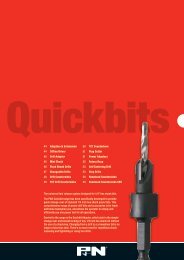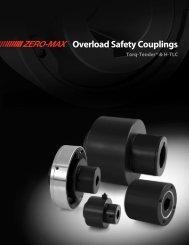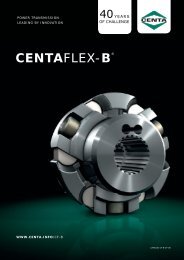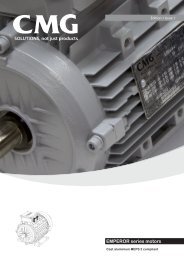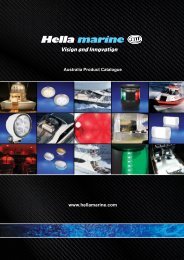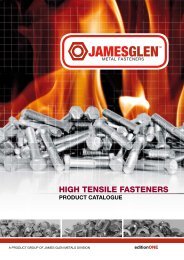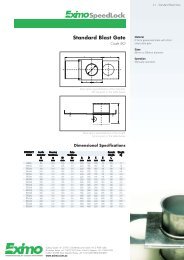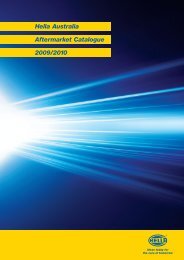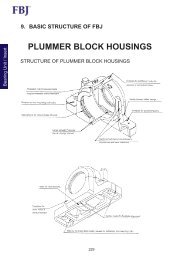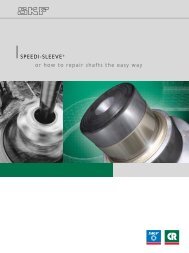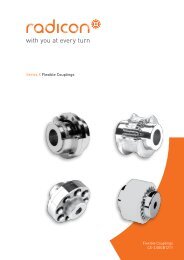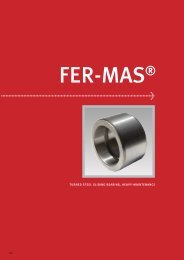Download - Industrial and Bearing Supplies
Download - Industrial and Bearing Supplies
Download - Industrial and Bearing Supplies
Create successful ePaper yourself
Turn your PDF publications into a flip-book with our unique Google optimized e-Paper software.
130 High Intensity Discharge (HID) Lamp Operation<br />
TECHNICAL<br />
Metal Halide (MH)Lamps<br />
Metal Halide lamps are high-pressure mercury<br />
lamps with added metal iodides or iodides of<br />
the rare earths – Dysprosium (Dy), Holmium (Ho)<br />
<strong>and</strong> Thulium (Tm) – <strong>and</strong> complex compounds of<br />
Caesium (Cs) <strong>and</strong> Tin Halide (Sn). The Halides<br />
decompose in the core of the discharge arc<br />
<strong>and</strong> the metals can be excited to emit light<br />
with an intensity <strong>and</strong> spectral distribution that<br />
depends on the vapour pressure of the metal<br />
halides. The luminous efficacy <strong>and</strong> the colour<br />
rendering properties of the Mercury discharge<br />
are significantly improved <strong>and</strong> the gaps in the<br />
mercury spectrum are closed. Metal Halide<br />
(MH) lamps are similar in their construction<br />
to mercury vapour lamps. They are popular<br />
for their excellent colour rendering which is<br />
achieved by the inclusion of rare earth elements<br />
in the discharge tube.<br />
Metal Halide lamps are temperature sensitive,<br />
with optimal operation occurring at 100°C to<br />
180°C ambient temperature. Luminaires should<br />
be designed to provide suitable conditions.<br />
Ballasts must operate lamps from the correct<br />
supply voltage <strong>and</strong> their impedance should<br />
not vary more than ±3% from the specified<br />
value. The supply voltage should not deviate<br />
for extended periods for more than 3% of the<br />
nominal rated voltage of the ballast, <strong>and</strong> the<br />
supply frequency should not deviate by more<br />
than ±3%.<br />
Metal Halide lamps require higher voltages for<br />
starting than the usual supply voltages. Various<br />
circuits are used to achieve the required starting<br />
conditions.<br />
Metal Halide lamps require leakage reactance<br />
ballasts, constant wattage auto-transformer<br />
control equipment or series reactor type<br />
ballasts with ignitor. The latter is the most<br />
economical solution, with the constant wattage<br />
circuit being the best for electrical performance.<br />
Electronic control gear for lower wattage MH<br />
lamps is also available<br />
Separate information <strong>and</strong> data is available for<br />
the Hella range of constant wattage control<br />
equipment.<br />
Most Metal Halide lamps will require an ignitor<br />
to start the discharge in the arc. The ignition<br />
voltage is generally 4.0–5.0kV peak for a cold<br />
start with the lamps requiring a cooling period<br />
of between 10–15 minutes before they will<br />
re-ignite. Certain lamps are capable of hot reignition,<br />
in which case voltages of up to 35kV<br />
peak are required. Some of the higher wattage<br />
2000W <strong>and</strong> 3500W lamps can require hot,<br />
instant re-strike voltages of up to 60kV peak.<br />
NOTE: Not all makes <strong>and</strong>/or types of Metal<br />
Halide lamps can be operated on ignitor circuits<br />
– consult the lamp manufacturer or Hella for<br />
information or lamp control gear compatibility.<br />
High Pressure Sodium (HPS)<br />
Lamps<br />
High Pressure Sodium (HPS) lamps can operate<br />
satisfactorily from –30°C to +100°C on series<br />
reactor ballast circuits, but precautions against<br />
increase arc tube voltage, due to thermal back<br />
radiation when mounted in luminaires, should<br />
be considered. Only a typical 10 volt increase<br />
in lamp voltage is tolerable. The lamp power<br />
<strong>and</strong> discharge tube temperature are highly<br />
dependent upon the lamp voltage. It is therefore<br />
important that the mains voltage does not<br />
exceed 105% of the nominal rated voltage of<br />
the choke for extended periods.<br />
The ballast should exhibit a closely controlled<br />
current/voltage characteristic, to prevent the<br />
lamp from exceeding the maximum power limit<br />
as it ages <strong>and</strong> the lamp voltage rises.<br />
St<strong>and</strong>ard lamps with st<strong>and</strong>ard ignitors<br />
re-ignite after 60 to 90 seconds, requiring 2kV<br />
to 5kV to ignite from a cold start, depending on<br />
the lamp specifications. High pressure sodium<br />
lamps can only be re-ignited hot if they are of<br />
linear double-ended construction because hot<br />
re-strike requires 18kV to 25kV peak starting<br />
pulses.



